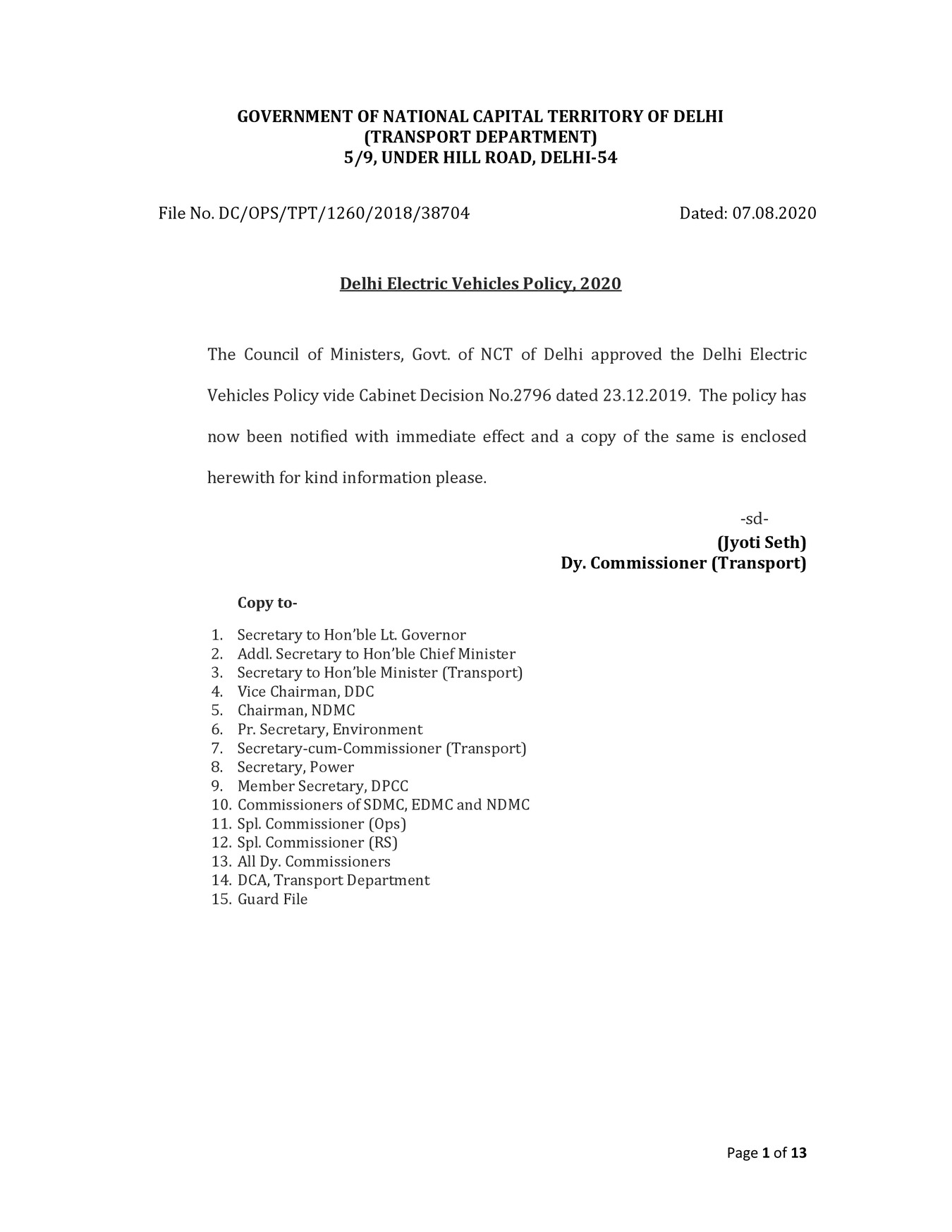| PDF Name | Delhi Electric Vehicle Policy | Delhi EV Policy 2020 PDF |
|---|---|
| Last Updated | March 11, 2023 |
| No. of Pages | 13 |
| PDF Size | 0.90 MB |
| Language | English |
| Category | Government Schemes, Forms, Policies & Guidelines PDF |
| Topic / Tag | EV Policy |
| Source(s) / Credits | Sarkari Yojana |

Delhi Electric Vehicle Policy 2020 available to download in PDF format at ev.delhi.gov.in. Delhi EV Policy 2020 is the most progressive EV policy in India and among the best globally. It sets an ambitious vision for Delhi to drastically reduce vehicular air to become one of the world’s top cities in terms of EV adoption. The Delhi Government aims to have 1 out of every 4 vehicles sold in Delhi by 2024, to be an EV.
Delhi EV Policy 2020
Delhi EV Policy aims to achieve the overarching objective to improve Delhi’s air quality and create an entire supply-chain ecosystem for this new segment of vehicles. In order to significantly benefit Delhi’s air quality, the policy intends to deploy 25% of all new vehicles to be battery-operated vehicles by 2024. Delhi EV policy aims to ensure Demand Generation as a means to ensure mass adoption and quick proliferation. In order to ensure demand generation, the Delhi EV Policy has adopted a method of a combination of fiscal and non-fiscal incentives.
While the fiscal incentive structure comprises purchase incentive, scrapping incentive on de-registration of old vehicles and interest waivers, the non-fiscal incentives will address issues such as road-tax waivers, green-registration plates for EVs, license-fee waivers and single-window clearances. The demand incentive available on various segments is expected to have a positive impact on the overall return of investment of the vehicle. The Delhi Electric Vehicle Policy has provisions to support the operations from a battery-swapping operator. While a number of theoretical and operational challenges exist around battery swapping systems, the policy may be a step in the direction of ensuring practical (and commercial) use of battery swapping technologies.
